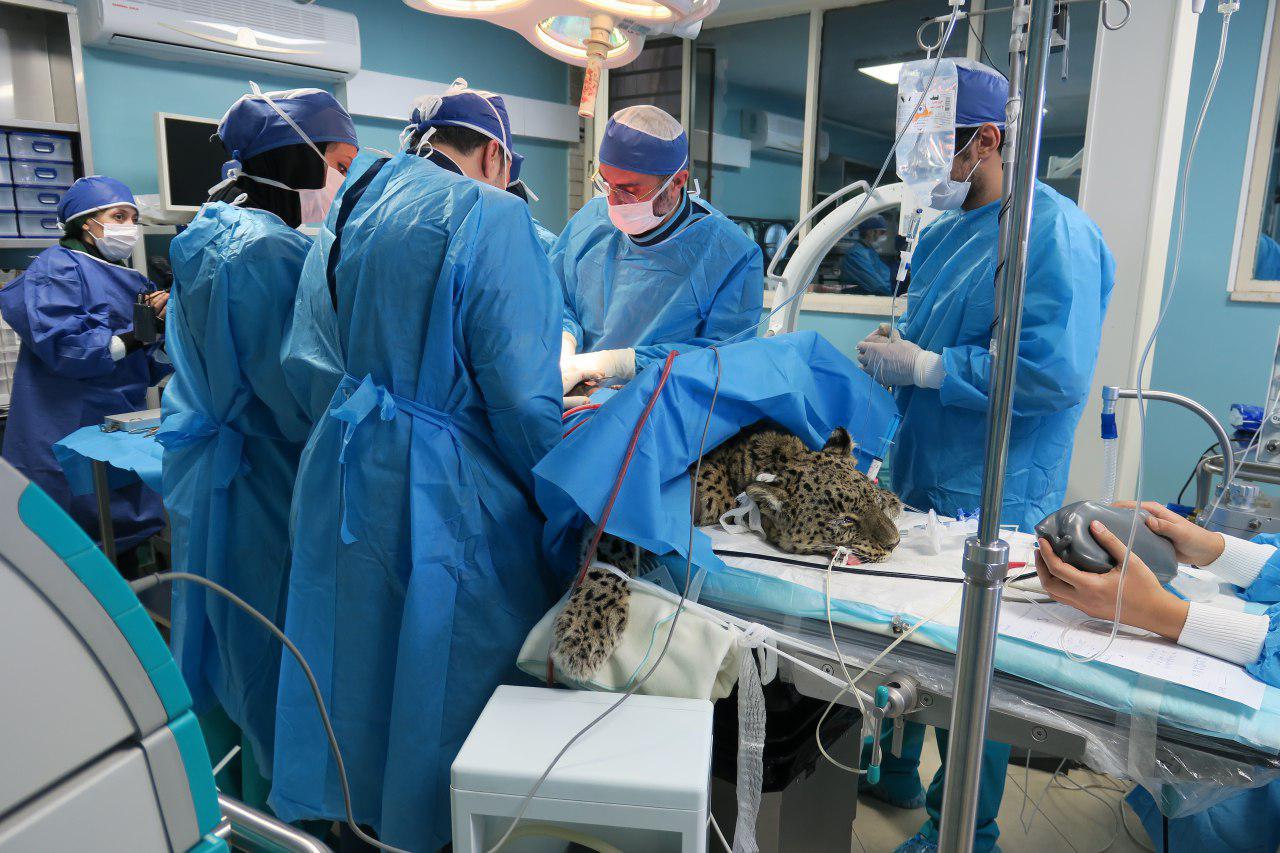A rare female Persian leopard that had undergone spinal surgery in February is recovering so well that authorities plan to move her to a bigger area before releasing her back into the wild.
Ali Teymouri, director of the Hunting and Fishing Office at the Department of Environment, said if the leopard continues to show physical improvements, she will be released into her natural habitat, ISNA reported.
The leopard is being looked after at a wildlife facility in western Tehran. However, barring unforeseen circumstances, the animal will be transferred to a facility in Qazvin (143 km northwest of Tehran), where a 600-square-meter plot of land at a local facility has been prepared for her.
Teymouri said the four-year-old leopard spent her formative years with her mother, learning how to hunt and survive in the wild.
“So we’re not particularly worried about how she’ll fare in nature once we release her; we know she has the necessary skills,” he said. “We just have to make sure the leopard is physically and mentally capable of fending for herself.”
The Persian leopard was found on February 5 caught in a boar trap in Roudsar, Gilan Province. The severity of her injuries compelled environment officials to bring her to Tehran’s Pardisan Park where one of Iran’s most well-equipped wildlife rehabilitation facilities is located.
Mission Impossible
However, CT scans revealed a lesion on her spine, which experts said was untreatable and recommended euthanizing the animal and freezing her ovaries. But Teymouri’s office insisted that she be operated on.
On Feb. 10, she underwent surgery at Dr. Hamidreza Fattahian’s veterinary clinic in Tehran.
To many people’s surprise, the Persian leopard began walking only seven days after the operation and has continued her miraculous recovery.
Persian leopards are among the most threatened animals in the world, with Iran among their last remaining habitat. They are classified as “endangered” species by the International Union for Conservation of Nature.
Studies have shown that 71% of all Persian leopard fatalities in Iran are attributed to illegal hunting or poisoning by shepherds trying to protect their livestock. Furthermore, road accidents accounted for 27% of leopard deaths between 2007 and 2014. Over the past eight years, 166 leopards have died across the country.
Measures, including fencing of roads that run through leopard’s habitats and insuring the animal to compensate those (such as shepherds) who suffer damages by the leopard, have helped reduce fatalities.
According to DOE, the number of Persian leopard deaths in the year ending Dec. 20 declined by 62% compared with the corresponding period of last year.
Efforts to protect the Persian leopard will not only help the species, but other wildlife as well, making the leopard a so-called umbrella species. Due to its wide distribution, protecting the endangered species will also help conserve the populations of other animals that share the same habitat.


